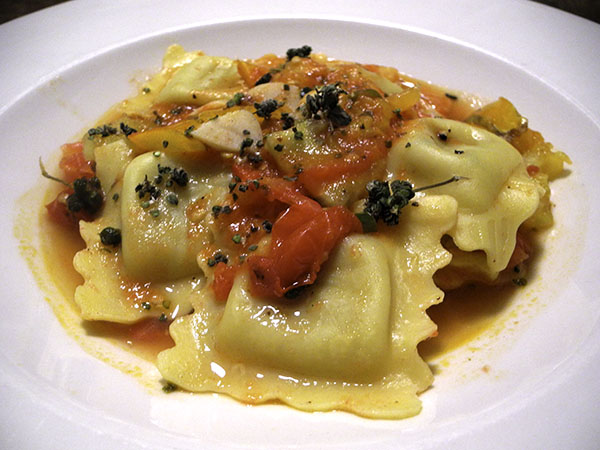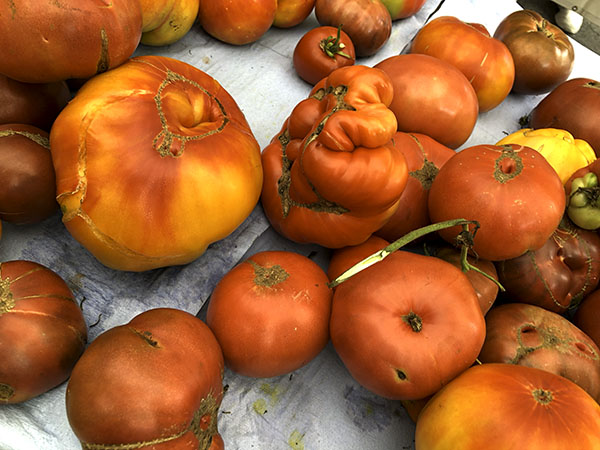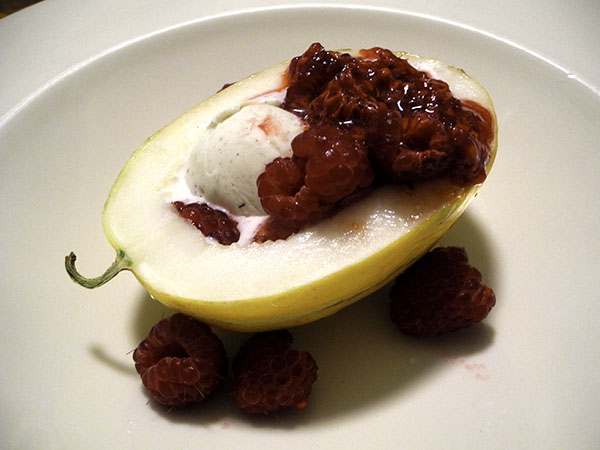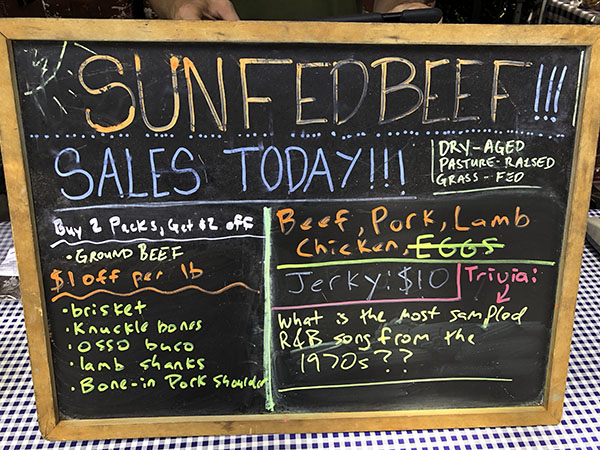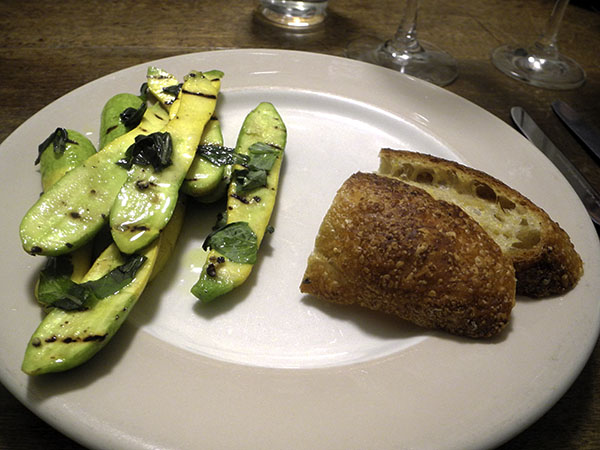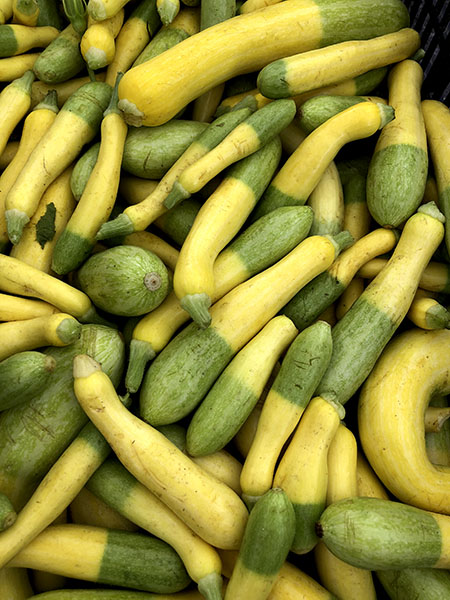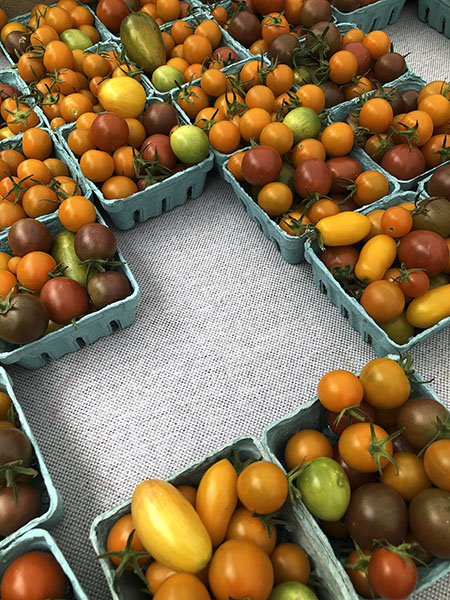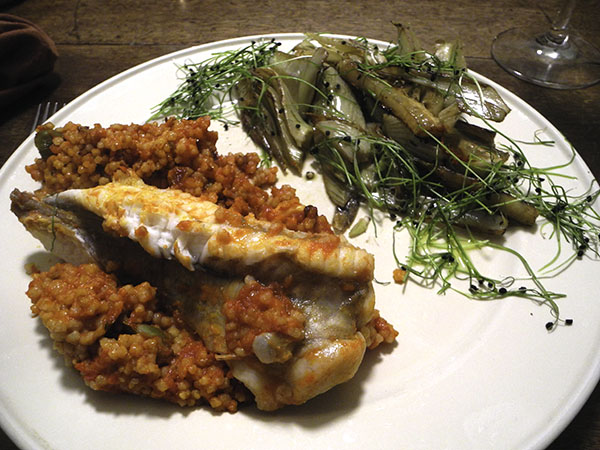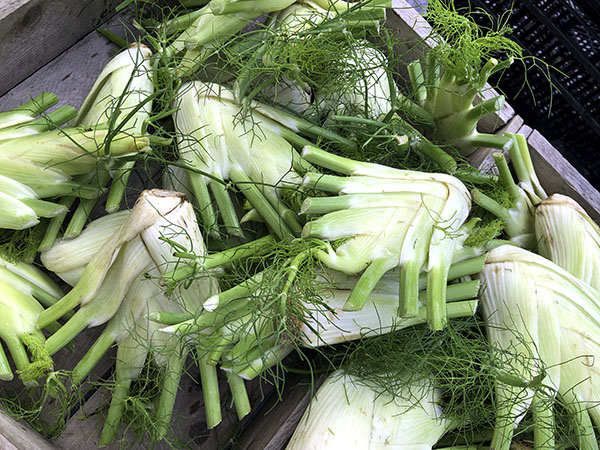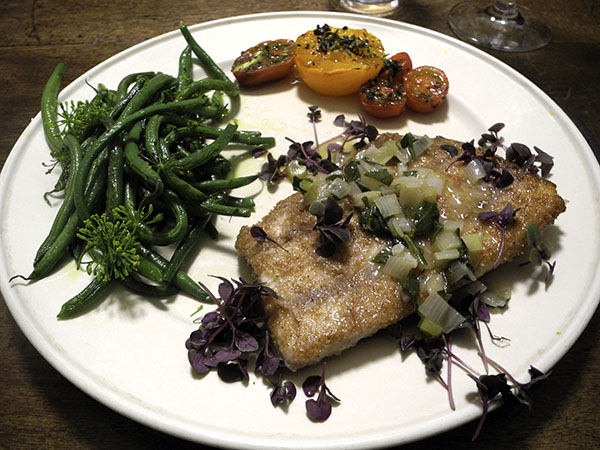
The fish was brilliant, even more delicious than it had been the first time I reeled it in from the surface of the range, probably because it was cooked more à point this time. I’m not going to think about the cost, although I have to say that it set me back a full $6 [yeah] for the one-pound filet that we shared; that’s less that what 2 filet-o-fish would have cost us, were we of the golden arches persuasion.
Karl Karlin, when he sold the filet to me earlier in the day from his Riverhead, Long Island family‘s stall in the Union Square Greenmarket, prefers to call it ‘summer shark’, which is a name I don’t see on line, where it’s more frequently dubbed, ‘dogfish’, ‘spiny dogfish’, ‘mud shark’, or ‘sand shark’. Sometimes, in Europe, the name it goes by alludes to ‘salmon’, which is a very different creature that bears no relationship to this fish other than color.
I like ‘summer shark’ very much, both the name and the delicacy.
Oh, and it’s as pleasing to look at, both before and after cooking, as it is savoring it once it’s been set on the table.

- *one ‘summer shark’ fillet weighing one pound from P.E. & D.D. Seafood, brought to room temperature, halved crosswise, dusted with some lightly-seasoned local North Country Farms Stone Ground Whole Wheat Flour, shaking off the excess, sautéed in a little over one tablespoon of olive oil inside a large heavy oval antique copper pan above a high flame for about 5 minutes on each side, or until browned, the heat then turned off while a second pan, a medium size vintage Corning Pyrex Flameware blue-glass pot, was heated over a low to moderate flame with another tablespoon of oil before 2 fresh finely-chopped scallions from Lani’s Farm were added and cooked until softened, stirring occasionally, followed by one medium salted and rinsed Italian anchovy, more than a tablespoon of chopped Italian parsley from Keith’s Farm, and a half cup of wine, an Oregon (Williamette Valley) white, Scott Kelley Pinot Gris Willamette 2017, from Naked Wines, the heat increased and the liquid reduced almost completely before a tablespoon of fresh water added, the sauce seasoned with a pinch of both salt and pepper and poured over the top of the fillet halves, the pan heated over a low flame for a minute or two, the fish served on the plates with a sprinkling of purple micro basil from Two Guys from Woodbridge
- a mix of 2 heirloom tomatoes from Norwich Meadows Farm and a few small red tomatoes from Alewife Farm, seasoned with salt, pepper, and a little bit of fresh thyme from Campo Rosso Farm and marjoram buds from Stokes Farm, both chopped, grilled briefly on a small enameled cast iron pan, arranged on the plates, where they were drizzled with a little olive oil and scattered with more of the herbs
- seven ounces of haricots verts from Norwich Meadows Farm, left whole, blanched, drained and dried in the same pan over low-medium heat, shaking, then set aside in a bowl until the fish was cooking, at which time they were reheated in a little oil inside a heavy well-seasoned cast iron pan, finished with sea salt, freshly-ground black pepper, and mixed with dill flowers from Alewife Farm
- the wine was a California (Central Coast/Santa Ynez Valley) white, Rick Boyer Santa Ynez Valley Dry White Blend 2017, from Naked Wines
by Rick Boyer - the music was the album, ‘Aaron Jay Kernis: Colored Field, Still Movement With Hymn‘
